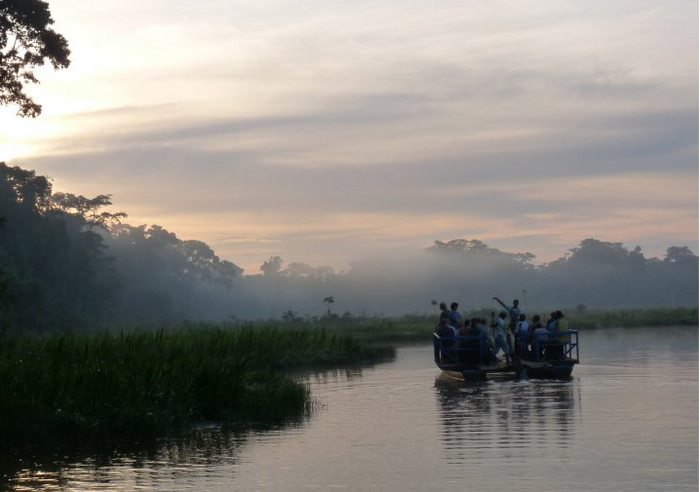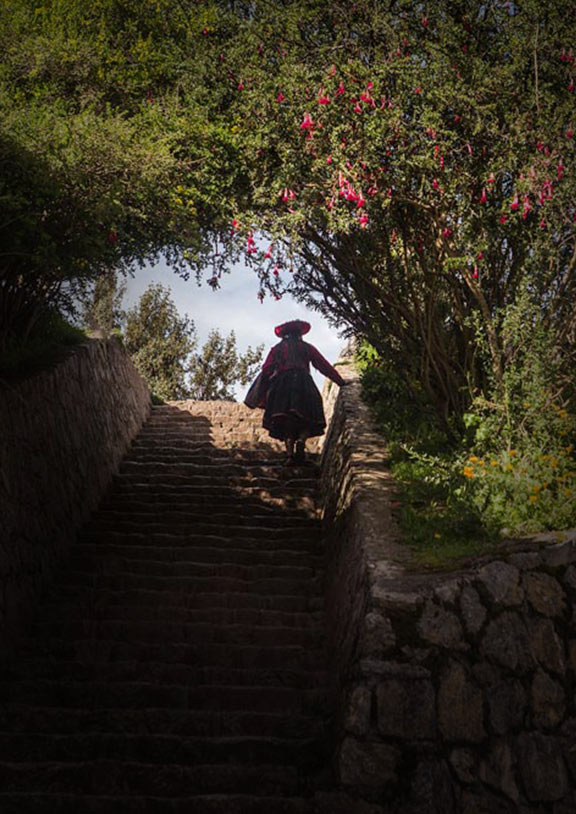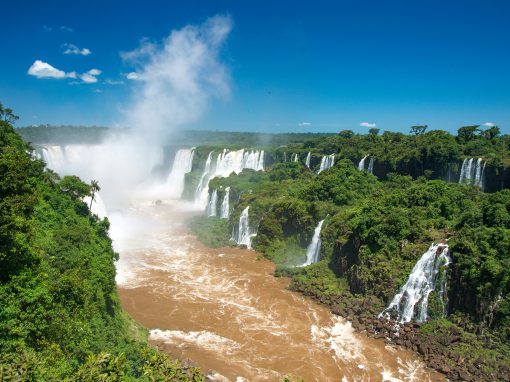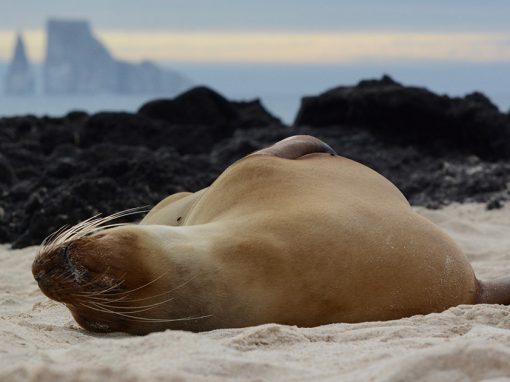When it comes to nature and wildlife, the Amazon has no close second. But the planet’s most diverse ecosystem is also its most endangered, mostly as a direct result of past and present human activity.
These conditions pose a dilemma for the ethically-minded traveler – how to visit the world’s most naturally splendid destinations without thereby degrading that which makes them naturally splendid. In other words, how to travel responsibly.
Content
Brazil’s floating mosaic
At the epicenter of Peru’s climate diversity
Ecuador’s ecosystem entourage
Ground zero for climate change
Fortunately, government officials in Brazil, Ecuador, Peru, Bolivia and other South American countries have taken initiative by establishing national parks systems to conserve and showcase the bounty of Mother Nature. In recent years, this has been coupled with the philosophy and practice of ecotourism. which provides mechanisms to open protected areas to visitors while also contributing to their conservation and to the well-being of communities affected by tourism.
The Amazon functions as ground zero for debates about climate change. One of the great benefits of sustainable tourism to the Amazon is that it reminds us of our binds to wild nature and it instills an urgent drive to preserve it. The Amazon’s national parks are the best places to appreciate firsthand the treasures of this valuable ecosystem.
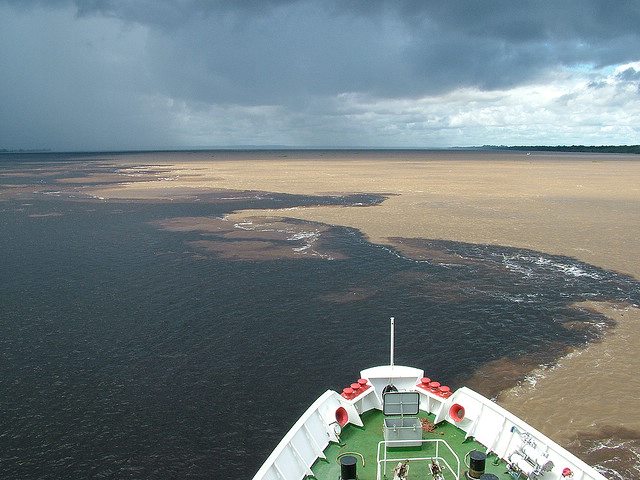 The Amazon River: the multi-colored life blood of ground zero
The Amazon River: the multi-colored life blood of ground zero
Photo by Heather Thorkelson/Flickr
Brazil’s floating mosaic
Jaú National Park is a mosaic of river channels, lakes, and floating landforms that are constantly in flux, shifting in size and location depending on the volume of the river. Located in the Central Amazon Conservation Complex of Brazil, the park covers 23,000 square kilometers, making it the largest forest reserve in South America. Access to outsiders is restricted, but travelers lucky enough to hike its terra firme trails and canoe through its flooded forests will have a chance to see some of the rarest plant and bird species in the world.
The Anavilhanas Archipelago, located 70 km north of Manaus, is one of the Amazon’s most striking destinations. In the rainy season, water levels rise and submerge most of the archipelago. In the dry season, stretches of white sand beaches and mounds of densely vegetated land become exposed. The species that reside here are adapted to the seasonal changes of water levels. These include caimans, pink dolphins, the giant river otter, the Amazonian manatee, and the South American river turtle, and countless species of birds, monkeys, and butterflies.
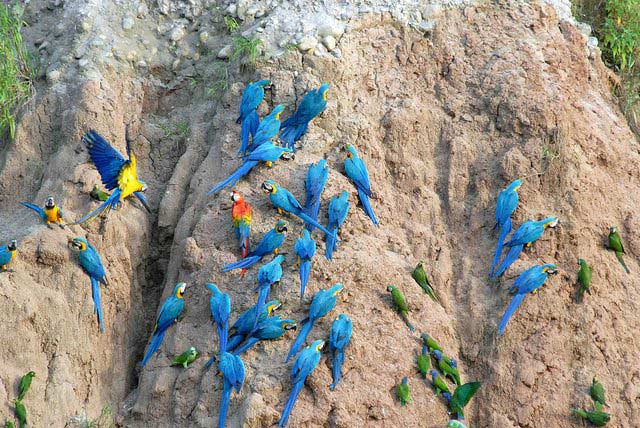 Charismatic macaws feed at the clay lick in Tambopata.
Charismatic macaws feed at the clay lick in Tambopata.
Photo by mediocreimage
At the epicenter of Peru’s climate diversity
In Peru, the eastern flanks of the Andes give way to the leafy exuberance of the Amazon. The result of this confluence is astounding biodiversity. Although the jungle solidly covers a half of Peru, its historical inaccessibility has kept it from becoming developed until recently. There are 3 main areas for ecotourism: Puerto Maldonado, Iquitos, and Manu. All are in close proximity to important national reserves. Among these, Puerto Maldonado stands out for the scope of wildlife and its infrastructure for sustainable travel.
Located downriver from Puerto Maldonado, the Tampopata-Candomo Reserve was created in the late 1970s specifically to preserve the zone for scientific study and ecologically responsible tourism. The hilly topography creates various microclimates such as cloud forests, humid forests, and subtropical rainforests. The array of flora and fauna includes 165 species of trees, 1,000 species of butterflies, and 750 species of bird. Basically, it’s a wildlife paradise.
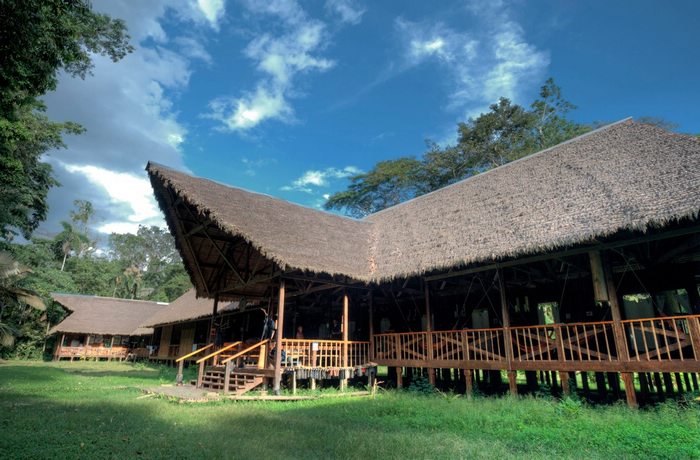 Experience the Amazon from the Tambopata Research Center near Puerto Puerto Maldonado.
Experience the Amazon from the Tambopata Research Center near Puerto Puerto Maldonado.
Photo by Rainforest Expeditions/Facebook
Rainforest Expeditions operates a string of lodges in the Tambopata region. Departing from the port in Puerto Maldonado, Posada Amazonas is just 45 minutes upriver, while Refugio Amazonas is 3.5 hours away. The Tambopata Research Center is an additional 4 hours upriver from the last lodge, providing a true jungle immersion experience. The 18-room lodge is walking distance from the largest clay lick in the Amazon, where parrots, parakeets, and macaws noisily congregate in a spectacle of sound and color.
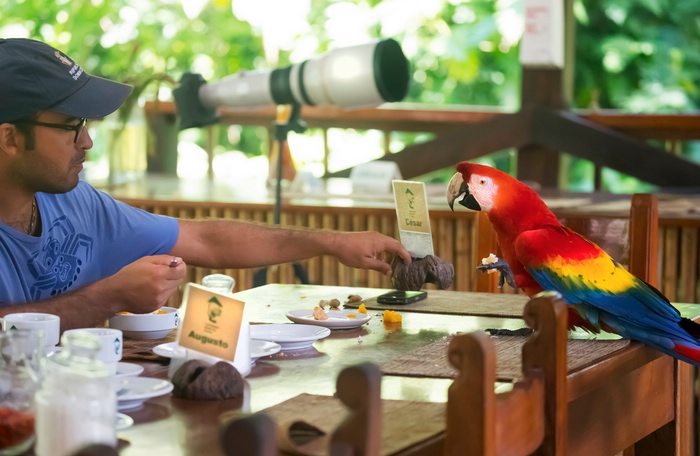 Visitor and local South American macaw discuss rainforest preservation at the Tambopata Research Center.
Visitor and local South American macaw discuss rainforest preservation at the Tambopata Research Center.
Photo by Barry Zee/Flickr
Ecuador’s ecosystem entourage
Ecuador boasts some of the most recently developed and exciting prospects for Amazon travel. Yasuní National Park, a UNESCO Biosphere Reserve on 2.5 million acres in northeast Ecuador, has been identified by scientists as the area with the most biodiversity on the planet, holding world records for documented numbers of plant and animal species, including tree, amphibian, and bat species.
The Napo Wildlife Center typifies the Amazon wildlife experience in Ecuador. Located within Yasuni National Park and managed by the Kichwa de Añangu community, travelers have an opportunity to explore rivers and the nearby Añangucocha lagoon, spot wildlife, visit parrot clay licks, zipline through canopy towers, taste regional food specialties, and learn centuries-old medicinal techniques from the healers and shamans in the community.
Anabel has been exploring the length and width of South America since 2010. Ditching preconceptions, settling into the local pace, and embracing the unexpected are the tenets of her philosophy of travel – and life.

